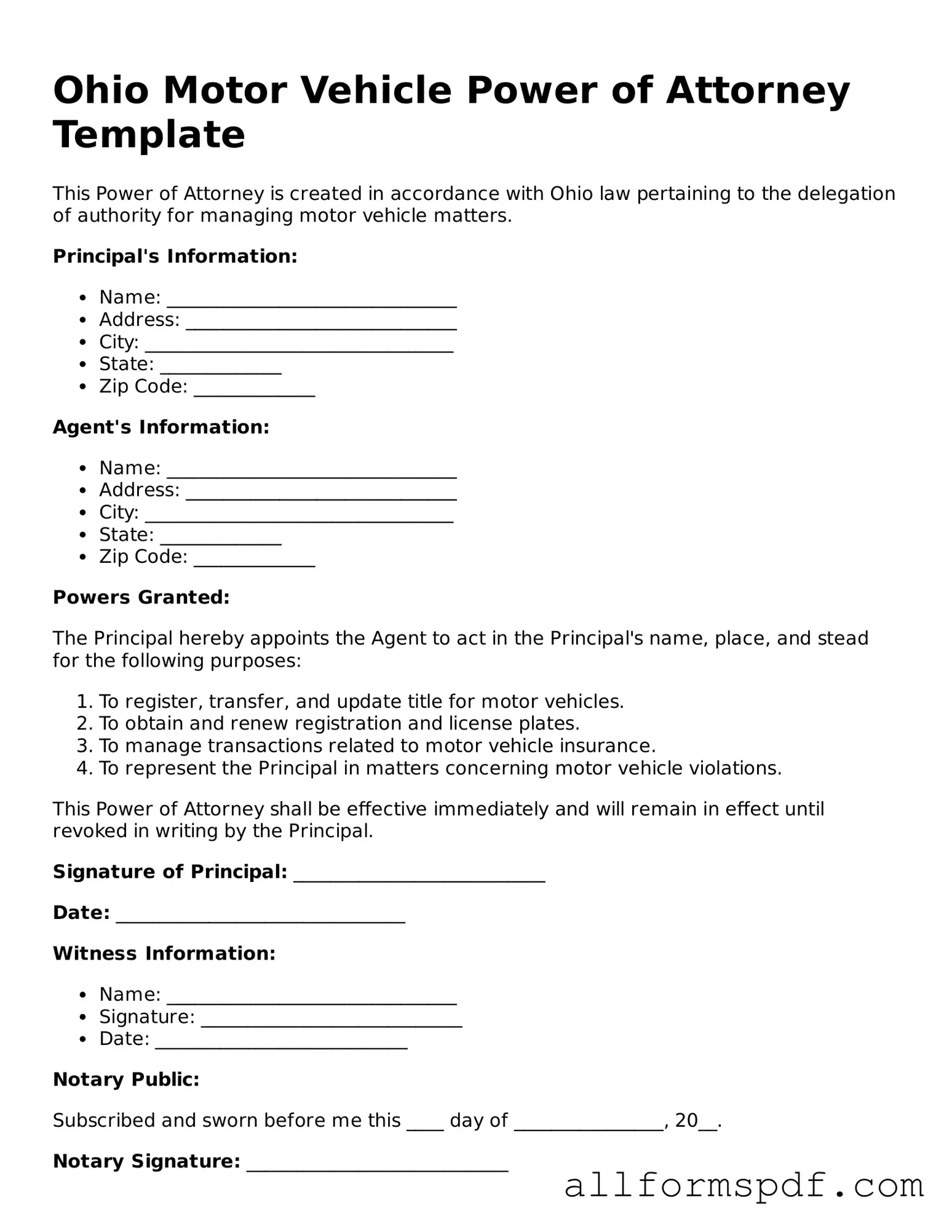Filling out the Ohio Motor Vehicle Power of Attorney form can be straightforward, but there are common mistakes that people often make. One frequent error is failing to provide accurate information. It’s essential to ensure that all details, such as names, addresses, and vehicle information, are correct. Any inaccuracies can lead to delays or complications in the processing of the document.
Another mistake is neglecting to sign and date the form. A signature is crucial for the document to be valid. Without a date, it may be difficult to determine when the power of attorney takes effect. Always double-check that both your signature and the date are present before submitting the form.
People sometimes overlook the importance of having a witness or notary present. In Ohio, a notary public must witness the signing of the Power of Attorney. Failing to have this step completed can render the document invalid. Make sure to arrange for a notary to be present when signing.
Additionally, individuals may forget to specify the powers granted. The form allows for various powers regarding the vehicle. If these are not clearly outlined, the agent may not have the authority needed to act on your behalf. Clearly state what actions your agent can take to avoid confusion.
Some people also make the mistake of not providing a clear description of the vehicle involved. The form requires specific details about the vehicle, including the make, model, year, and VIN. Omitting this information can lead to issues in identifying the vehicle for which the power of attorney is granted.
Another common error is not updating the form when necessary. If there are changes in ownership or if the agent's circumstances change, it’s important to fill out a new form. Relying on an outdated document can lead to legal complications.
Lastly, many individuals fail to keep a copy of the completed form. It’s vital to retain a copy for your records. This ensures that you have a reference point should any questions arise in the future. Always make sure to keep a copy in a safe place.
